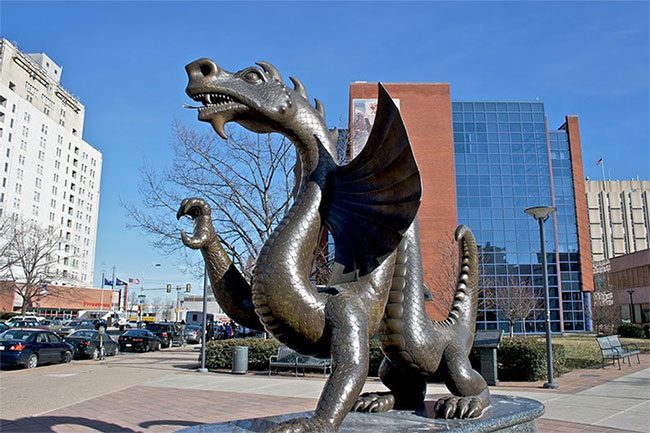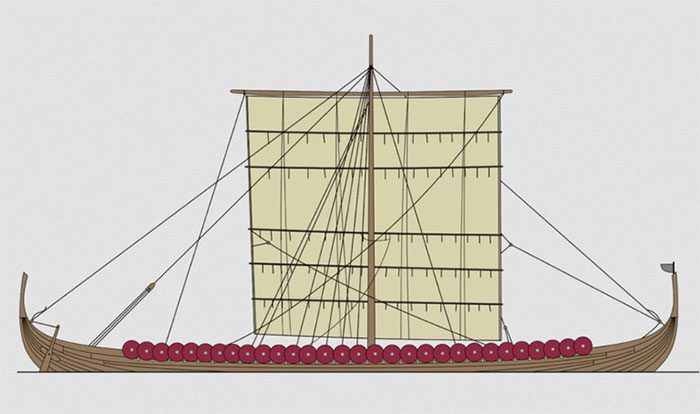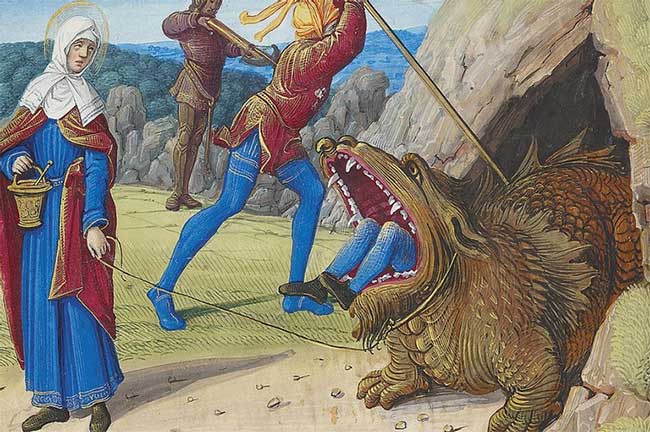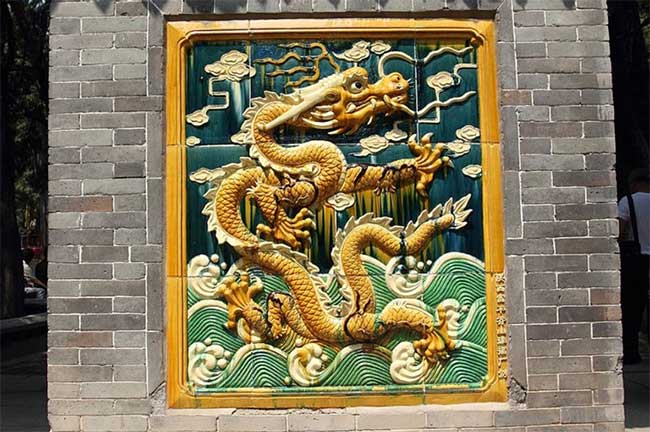Although dragons are creatures found only in legends, the perception of dragons differs significantly between Western and Eastern cultures.
The Western Perspective on Dragons
According to information from Draconika.com, Western dragons are often viewed as symbols of evil, as these creatures can fly and breathe fire. Many Western legends depict dragons as treacherous beings that guard treasures or serve as conquest targets for heroes.

Western dragon statue at Drexel University, USA. (Image: Wikipedia).
In Western imagery, dragons are sometimes used as symbols of war or protection. The Vikings, who lived in Northern Europe, often used a type of ship called a drakkar to transport their warriors for conquests across Europe. Some of these ships were adorned with dragon head sculptures at the prow to ward off evil spirits or sea serpents during their voyages.

Illustration of a drakkar ship. (Image: Wikipedia).
In Greek mythology, dragons also appear in stories involving the sun god Apollo and the sky god Zeus, often as antagonists. In the story “Jason and the Argonauts,” the heroes are required to fight a dragon to obtain the treasure of the Golden Fleece.
In France, there is a popular tale known as “Saint Martha and the Dragon.” This story recounts a dragon named Tarasque that terrorized the town of Nerluc near the Rhône River in the 1st century AD. Despite the efforts of the townspeople to defeat the dragon, all attempts were futile against Tarasque’s might.

Saint Martha and the dragon. (Image: Wikipedia).
Eventually, the people of Nerluc invited a nun named Martha to capture the dragon. With her strength, Martha quickly subdued the beast. To honor her efforts, the townspeople renamed their town Tarascon (now in the Bouches-du-Rhône department of France).
However, the most famous Western dragon-related tale is linked to the legend of Beowulf. The story revolves around a dragon that, angered by the theft of its treasure, ravaged the kingdom of Geat, ruled by King Beowulf. Despite being old and weakened, Beowulf resolved to confront the monster. Although he succeeded in slaying the dragon, Beowulf perished from the wounds inflicted by the beast.
The Eastern Perspective on Dragons
In contrast to the negative imagery in the West, the dragon in Eastern cultures, particularly among the Chinese, is viewed as a benevolent and revered creature. For royalty, dragons symbolize power, as the leader of the realm must possess extraordinary wisdom.

Dragon sculpture at a landmark in Shaanxi Province, China. (Image: Wikipedia).
The artist Dong Wu, who lived during the Five Dynasties and Ten Kingdoms period (907-979) in Chinese history, described the dragon as a combination of features from various animals, including “the antlers of a deer; the head of an ox; eyes like a shrimp; a camel’s mouth; a snake’s belly; fish scales; the feet of a phoenix; whiskers; and the ears of an elephant.”
According to History Skills, this combination of characteristics signifies that the dragon is a symbol of strength and the natural world. The power of the Eastern dragon is said to summon rain, call winds, and control elements, impacting the natural world, weather, and agriculture. Additionally, the dragon symbolizes wisdom and enlightenment, often depicted with a pearl, representing intelligence and enlightenment.
Furthermore, the dragon also symbolizes transformation. For instance, dragons can soar between heaven and earth and change their size, reflecting the ever-changing nature of human life.


















































